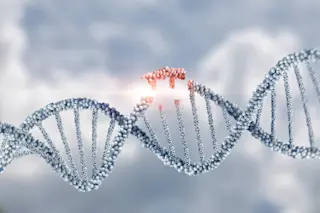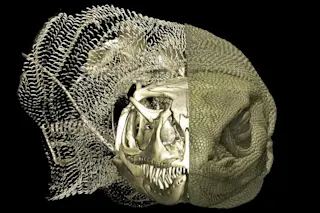You may have heard that no two fingerprints are alike, even if left behind by identical twins. This is because the characteristic ridges found on our fingers and toes are the result of both nature and nurture, so to speak.
The intrauterine environment is to blame for the more than 100 teeny-tiny variations that can be found in a fingerprint. These so-called minutiae include the bridges between ridges, or the abrupt ending of one, and are influenced by things like the density of the amniotic fluid sloshing around inside the womb.
On the other hand, scientists attribute the overall shape of fingerprints — typically categorized as either whorl, loop or arch — to genetics. And that means we evolved to have them.
Read More: What is the Purpose of Hiccuping?
Evolution of Fingerprints
A study published in Cell Press last year scanned the DNA of more than 23,000 people and found that over 40 different regions on the genome are associated with fingerprint patterns. Surprisingly, one of the most important regions turned out to also be responsible for regulating whole limb development.
But only a select few animals (read: our closest primate cousins and, for some reason, koalas) develop these unique patterns, and the rest of the animal kingdom seems to be getting along just fine.
It begs the question: Why did we evolve to have them in the first place?
For a long time, there were two basic schools of thought. Some scientists believed the furrows improve our sense of touch; others argued that they allow us to better grip surfaces. Let's dig into it.
The Benefits of Fingerprints
In 2009, a team of researchers turned to physics to prove that the former is true. After rubbing an artificial finger over a patterned surface and noting the frequencies at which it vibrated, the team reported in Science that certain vibrations were 100 times stronger than those produced by a smooth fingertip.
From an evolutionary perspective, a more detailed perception of things like textures and shapes certainly proves beneficial. It might have, for example, enabled our ancient ancestors to distinguish between food that is safe to eat and that which is rotten, covered in an ultra-fine layer of fuzzy mold.
Of course, the latter school of thought seems like solid logic, too — ridges generate more surface area on the pads of the fingers, much like tire treads that prevent your car from slipping right off the road, thereby increasing friction and ultimately traction.
But the researchers behind another 2009 study, published in the Journal of Experimental Biology, disagreed. They found that, when compared with completely flat skin, the presence of these patterns actually reduces contact area by a factor of one-third. Case closed?
Soaked to the Skin
Unprepared to throw away the entire argument for traction, however, another study recently probed the ability of fingertips to regulate moisture.
It’s well documented that this part of the human body has a higher density of sweat glands than anywhere else, so the team of researchers laser imaged six volunteers touching glass to figure out why.
Read More: 20 Things You Didn’t Know About… Sweat
They found that when coming into contact with smooth surfaces, sweat pores boost our grip by ensuring the skin is hydrated enough. When your grip is sufficiently strong, however, those pores are effectively blocked by the surface of whatever you’re holding — preventing too much sweat from being released.
Likewise, the researchers say, when touching a surface that is already too wet and perhaps a bit slippery, the furrows direct excess water to the base of the fingertips and away. It’s truly the best of both worlds!














